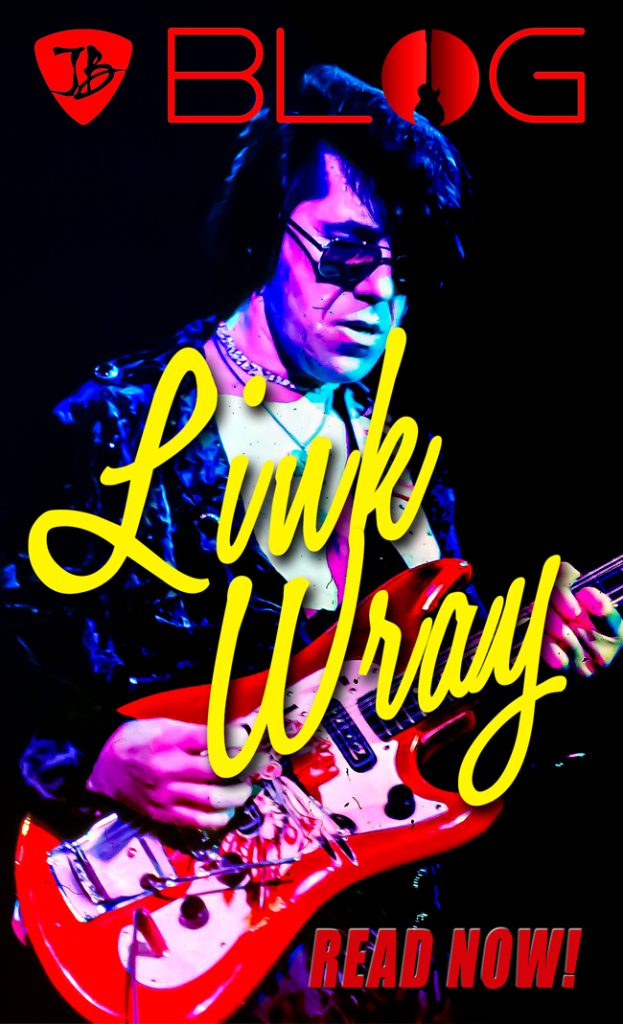Let’s just face the elephant in the room before we go any further. Just the fact that he helped create the blueprints for early rock n roll as well as the power chord that goes with it! Yet, it takes the Rock ‘n’ Roll Hall of Fame forever to even recognize what Wray brought to the table.
He was the King of cool when it came to guitarists and they missed the boat on this one. At least the song “Rumble” is recognized at some point. Maybe the first punk rocker, and being the possible connection between early Blues guitarists and the late 60s rock gods? It’s possible!
Starting out in country, then rock, onto rockabilly, instrumental as well as surf rock. But his music at times also teetered on the edge of metal and punk. Especially when it came to his distortion and the loudness.
But let’s be honest here, would he really want to be there? I don’t think so, mainly because he was too cool for that kind of scenario. He knew he was a bad-ass, and he just wanted to play his music and make a living doing it. So, he created his own path to musical history.
Furthermore, he intentionally played music with distortion and it was great! While inspiring generations of rock guitarists to do the same. Without him we wouldn’t have half the music genres we have today.
By cutting the track “Rumble”, he already had his career path planned out and it was making the loud music he liked while waiting for everyone else to catch up. Performing and recording since the 1940s.
Link Wray & John Cipollina Performances
John Cipollina was one of the founding members of the San Francisco psychedelic rock band known as Quicksilver Messenger Service. During the 1960’s, the band was one of the most popular and well-respected bands playing in the San Francisco acid rock scene. He and Wray became friends and would have jam sessions. which eventually turns into a band playing different venues around San Francisco and the Bay Area.
John went on to perform and record with dozens of bands, blazing a trail from rock to blues to jazz over a brilliant twenty-five-year career. Below he’s performing at the Winterland in San Francisco with Link Wray.
There are two others that also were from the Winterland in San Francisco in November of 1974. All of them are pure magic to watch so be sure to check them out!
Growing up in Dunn North Carolina was a definite challenge for Wray and his family. Not only were they poor but also native americans, specifically Shawnee. At ten years old, he has to go to work to help feed the family and then there is the KKK causing chaos with raids in their town.
The Early Years
Growing up in Dunn North Carolina was a definite challenge for Wray and his family. Not only were they poor but also native americans, specifically Shawnee. At ten years old, he has to go to work to help feed the family and then there is the KKK causing chaos with raids in their town.
His family slept on the floor of barns under the protection of Cherokees. Ate whatever ‹ usually little. Shook with fear at KKK raids. So, it’s easy to understand that his childhood was not that great, and he makes a smart choice to gravitate to music along with his brothers. He started a band with his brothers performing on the country circuit as “Lucky Wray and the Palomino Ranch Hands.”
Later, when “Rumble” became a hit, they became “Link Wray and the Raymen. But after a while things went sour, and his brother Vernon stole the rights to “Rumble” and other classics and destroyed the master tapes of many of the early songs. Wray goes out on his own. As you can see, he found his path to stardom or at least a way to make a living.
His Legacy
Wray died of heart failure at his home in Copenhagen, on November 5, 2005. Iggy Pop, Neil Young, Jimmy Page, Bob Dylan, Bruce Springsteen any many more cite him as an influence. Even more, with the legacy of material he left behind, it’s important to help keep his name and legacy going.
BE SURE, TO CHECK OUT THE OTHER BLOG POSTS!


